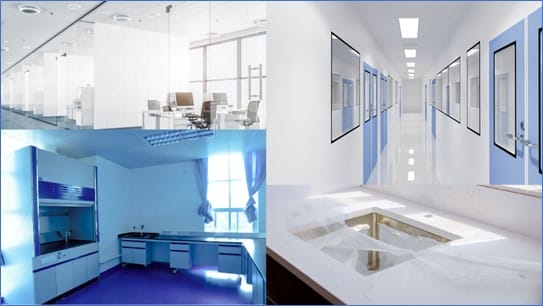HPL stands for High Pressure Laminate, which is a type of composite material made from layers of kraft paper impregnated with phenolic resin, bonded under high pressure and temperature. The resulting material is a durable, non-porous, and resistant to heat, scratches, and impact.

HPL is widely used in commercial and residential applications, such as countertops, cabinets, flooring, wall cladding, partitions, and furniture.
Its versatility, durability, and aesthetic appeal make it a popular choice for architects, interior designers, and homeowners.
The manufacturing process of HPL involves several steps, including the impregnation of kraft paper with phenolic resin, layering of paper sheets, pressing of the laminate under high pressure and temperature, and trimming to the desired size. HPL can also be post-formed or curved using specialized machinery, allowing for a variety of design options.
Machining of HPL involves cutting, drilling, and routing the material to the desired shape and size. Due to its hardness and abrasiveness, HPL requires specialized cutting tools, such as PCD (Polycrystalline Diamond) end mills and PCD drills. The machining process should be carried out with care to prevent chipping or delamination of the laminate.
PCD tools are made from diamond particles bonded to a carbide substrate, providing exceptional hardness and wear resistance.
PCD end mills and drills are commonly used in machining HPL due to the abrasiveness of the material.

PCD Drill
When machining HPL, PCD end mills and drills offer several advantages over traditional cutting tools. Firstly, they are more durable and can maintain their sharpness for longer periods, reducing the need for frequent tool changes. Additionally, they produce less heat and friction during cutting, reducing the risk of delamination or chipping of the laminate.

PCD Spiral End Mill
When using PCD tools for machining HPL, it is important to consider the specific cutting parameters, such as feed rate, spindle speed, and depth of cut. These parameters will vary depending on the thickness, density, and type of HPL being machined. In general, a lower feed rate and spindle speed is recommended to minimize heat buildup and prevent damage to the tool and workpiece.
Furthermore, it is important to ensure proper tool setup and alignment to prevent vibration or deflection during cutting, especially when relatively small material thickness is about, which can result in poor surface finish or tool breakage.
For more information www.telconpcd.com, [email protected]